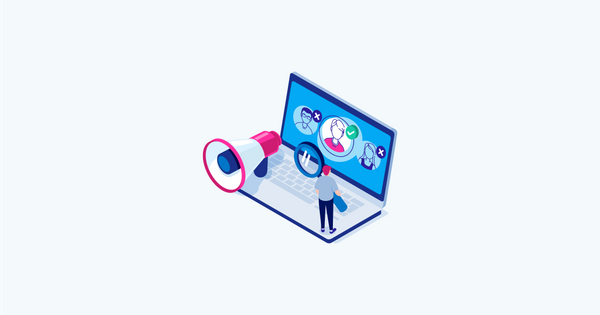A Foolproof Guide to Growing Revenue Through Customer Segmentation
Do you remember the last time somebody whispered to you? You probably had the same reaction that the rest of us do. You stopped focusing on anything else, leaned in, cocked your head, and listened intently, not wanting to miss a word.
Compare that to the last time you heard someone speak over a store loudspeaker. You probably went about your business and barely even acknowledged that anything was being said at all.
Most marketing and advertising resembles a loudspeaker more than a whisper. Brands send out relatively generic messages to broad target audiences, and those messages often fall on deaf ears.
So how do you make your marketing and advertising sound more like a whisper in your potential customer’s ear? You make it more personalized to them by using proper lead and customer segmentation.
What is Segmentation?
Segmentation refers to breaking down your database or list of customers and leads into groups of people that are similar to each other in one or more ways.
We most often hear about segmentation when we’re talking about email marketing, but segmentation can help with nearly all of your marketing efforts. It can help you create better online advertising audiences, use more effective calls-to-action on your website, and make better decisions about your messaging.
How Does Segmentation Work?
As I mentioned, segmentation works well because it allows you to create targeted messages that are more personalized to your audience members. But just what kind of results can you get when you use proper customer segmentation? Here are a few examples from recent studies:
• MailChimp found that segmented email campaigns led to 100.95% more clicks than non-segmented campaigns in a recent study of about 2,000 of its users.
• HubSpot found that calls-to-action targeted to the user had a 42% higher view-to-submission rate than calls-to-action that were the same for all website visitors.
• Optimove found that average revenue per customer in segmented email campaigns was $42, compared to $28 in unsegmented campaigns in their 2016 study.
Now that we’ve established how powerful a good segmentation strategy can be, let’s get into five ways you should think about segmenting your list.
1. Segmenting by Buyer Persona
Buyer personas are semi-fictional representations of an ideal customer based on real data that you know about them. They’re more specific than target audiences, typically containing detailed demographic and psychographic data. I find that it’s helpful to think about a target audience as an actual target, and a buyer persona as the center of that target.
A well-made buyer persona will give you a snapshot of detailed information for people who are similar to that persona, such as their demographics, goals, challenges, interests and behaviors.
Buyer Persona Segmentation Example
Let’s say you own an upscale restaurant that has two common types of customers: affluent young single people working in your city’s booming tech startup industry and well-off older couples. After creating a buyer persona that describes an ideal customer from each group, you realize that they have very different motivations.
The buyer persona for the younger customer, we’ll call him Startup Sam, loves to use your restaurant to impress his date. The buyer persona in the other group, we’ll call her Empty-Nester Nancy, enjoys bringing her husband to your restaurant because she loves the food and the fact that she doesn’t need to cook at home on those nights.
After you use these personas to segment your database, you can now begin to customize your messaging. You’ll know that Startup Sam is more likely to respond to an invitation to come in for a special date-night menu on Valentine’s Day. For Empty-Nester Nancy, you know she’s likely to be interested in a new dish and would be more likely to come in on a normal weekday evening.
2. Segmenting by a Lead’s Stage in the Sales Funnel
If you’re tracking the right data, you should have a pretty good idea where each of your leads is in your sales funnel. From there, segmentation is easy.
If you don’t yet track that data, it’s pretty easy to start. Just define your stages and create criteria for what it means at each stage.
Sales Funnel Segmentation Example
Let’s say you’ve defined three stages in your sales funnel, one for new leads, another for people that are ready to be contacted by your sales team, and another for leads that your sales team is currently working. You’ve tracked that data in your CRM, so making a segment for each stage is simple.
Now that you have those segments, you can deliver tailored messages that are most valuable to a lead at the stage they’re in. For example, a new lead is probably most interested in educational information about how your product can help them solve a problem. A lead being worked by your sales team, however, might be more interested in looking at a detailed whitepaper about your product’s technical specifications.
Delivering tailored messages depending on a lead’s stage in the funnel is a key part of effective lead nurturing – the process of taking a lead through the funnel towards a sale. Check out our article on lead nurturing software if you’re curious about how to automate some of this in your own marketing and sales efforts.
3. Segmenting by Geography
Geography is another easy way to segment your audience and it’s very powerful for certain types of businesses. All you need to know about your customers to segment them by geography is where they live. Then you can decide to create segments based on city, state, country, or any other geographic area.
Geography Segmentation Example
Let’s say you own a physical retail store in one location, but you also sell products online. You occasionally run in-store-only sales, but don’t want people that live far away to feel left out.
An easy way to fix this issue would be to create two geographical segments, one for customers that live within a certain radius of your store, and one for everyone else. Now you can send your in-store specials just to the people who are close enough to take advantage of them.
4. Segmenting by Lead or Customer Behavior
This is perhaps the broadest category of segmentation on this list, but it’s also one of the most powerful. The idea is to create different groups of leads or customers based on actions they’ve taken.
This can be as simple as having different segments for leads that came from different sources, such as one group that responded to a Facebook ad and another group that responded to a mailer. Or, using sophisticated marketing automation software like HubSpot’s marketing tools, you could create segments for different levels of interaction on your website or with your email campaigns.
Behavior Segmentation Example
Let’s say you have a website with an active blog, a variety of calls-to-action, and software like HubSpot.
Collecting basic info about new users when they sign up can help you serve them better content. You know they’re most likely to be interested in educational content so you set your website up to show them a call-to-action that offers a downloadable guide.
This works great at getting new leads, but when someone comes to your website that’s already downloaded a few pieces of your content, you want to see if they’d be interested in setting up a free consultation with you. So, you create a segment of leads who have downloaded more than two pieces of educational content, and set your site up to show them a call-to-action to book a free consultation.
5. Segmenting by Past Purchases
Using past purchases to segment your customer list is a great way to get some easy revenue.
You probably already know that it’s easier to make money by keeping existing customers around than by finding new customers all together. So, at a minimum, you should have a segment for people who have already purchased from you.
If you want to get more advanced, you can create segments based on the type of products they’ve purchased, how often they purchase, how much they typically spend per transaction, and more.
Past Purchase Segmentation Example
Let’s say you sell a consumable product that lasts an average customer about 6 weeks before they need to buy again. By creating a segment of your customer database based on the fact that they purchased that product, you can set up emails to go out to them automatically with a reminder and a small coupon to ensure they keep buying that product every six weeks.
Recap
Segmenting your lead and customer database is a great way to improve your marketing and sales performance across your organization. The five ways you should think about segmenting your audience include segmenting based on buyer personas, sales funnel stage, geography, behavior, and past purchases. Use a CRM to help you manage the segmentation and get as detailed as possible – the smaller the segment, the better you can personalize the message.




